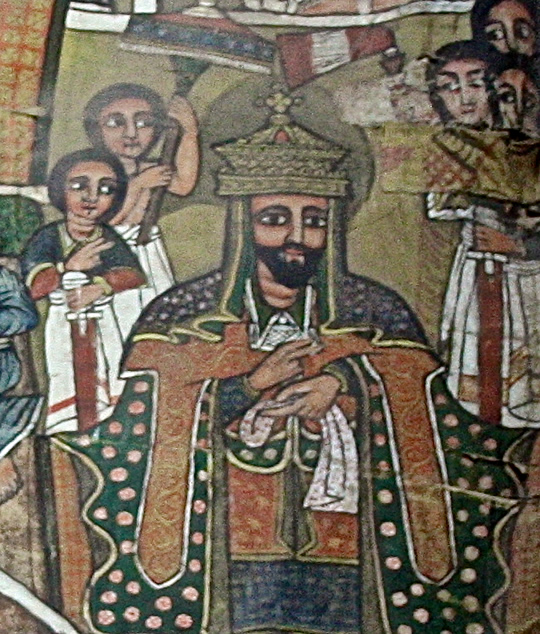 |
| Lalibela - Ethiopian King |
When the Axumite empire, believed to have been established by the son of King Solomon and the queen of Sheba, fell in the 11th century, the Zagwe dynasty took power. Of non-Solomonic origins, the Zagwe moved the Ethiopian capital from Axum to Roha (present-day Lalibela about 400 miles north of Addis Ababa).
King Lalibela was the most famous of the Zagwe monarchs. Much of his life is shrouded in myth. His name means “the bees recognize his sovereignty,” after the legend that upon his birth, bees representing soldiers surrounded him to protect and serve their monarch.
King Lalibela, (r. 1167–1207) was a devout Christian; his subjects believed he had traveled to Jerusalem as well as having been transported by angels to the heavens. Lalibela sought to create a new Jerusalem in his capital traversed by a small river named the Jordan. Over the course of 25 years, Lalibela constructed 11 churches hewn out of solid rock.
The churches are connected by a maze of tunnels and Ethiopia, was carved under ground level. It is 12 meters high, with a cross-shaped floor plan, covered by a roof decorated with carved crosses.
King Lalibela is buried in the Beit Maryam church while another, Beit Medhane Alem, is thought to be one of the largest monolithic churches in the world. As with Gothic architecture in medieval Europe, these monuments represent a fusion of religious belief and political power.
The Zagwe dynasty collapsed in 1270 when it was overthrown by an heir to the Solomonic line of Ethiopian rulers.
EmoticonEmoticon